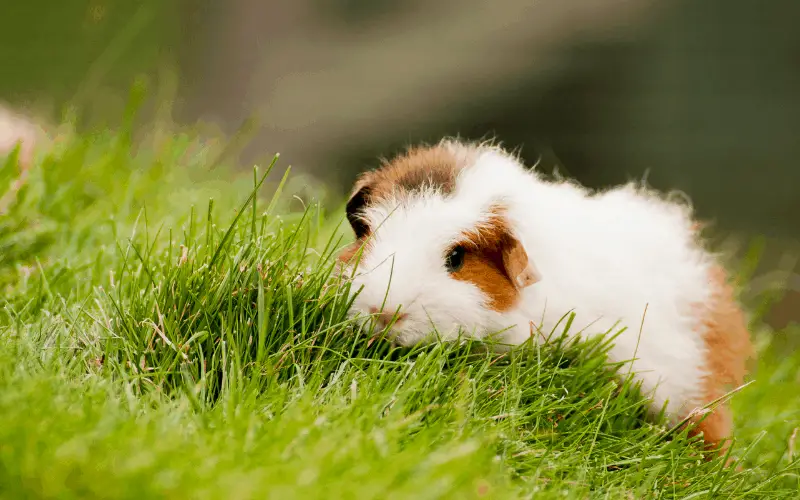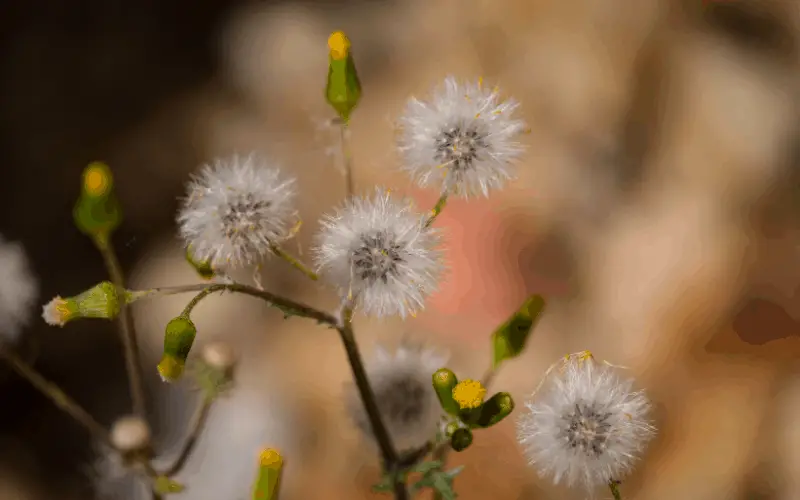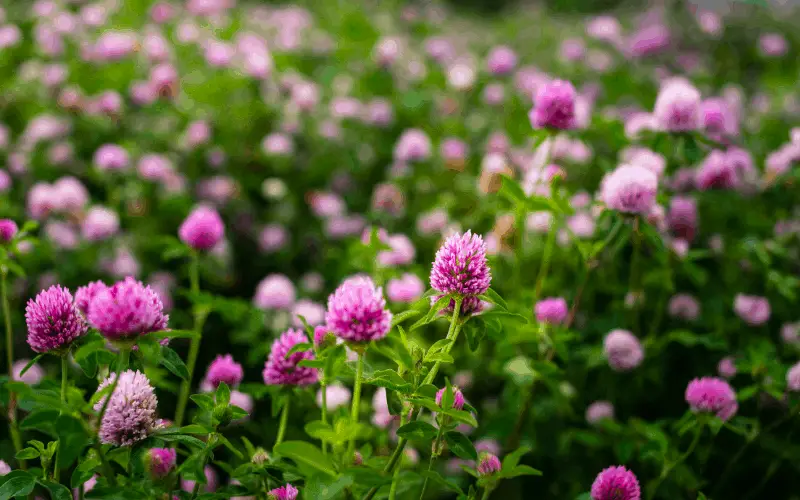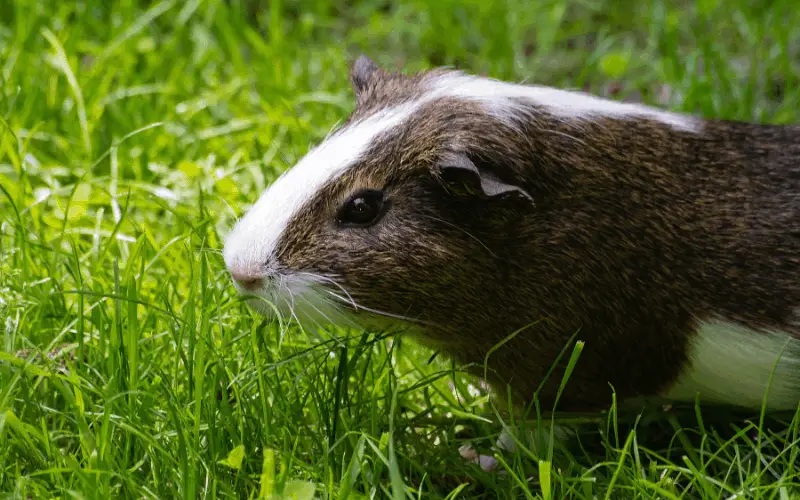It is imperative that you provide your guinea pig with lots of fresh plants as it is a great way to help maintain its optimum health. However, you can’t just go in the wild and pick and any wild plants you see and feed it your piggies.
There are certain plants that are of benefits to guinea pigs, there are some that aren’t. In fact, some of these plants can harm your pet. So it is very important that you are able to identify that a particular plant is good before feeding it to your pet.
But what wild plants can I feed my guinea pig? Some of the numerous wild plants that guinea pigs can eat include dandelions, cleavers, chickweeds, etc.
We’ll talk about these plants in detail below.
What Wild Plants Can I Feed My Guinea Pig?
Below are some common wild plants that are great for your guinea pig:
1. Grass

Grass is a popular choice of wild plants that guinea pigs happen to love. It is easily sourced and it is easy to get your piggy a new bunch every day.
Freshly picked it is filled with nutrients that are beneficial to your guinea pigs. You just need to ensure that the grass isn’t contaminated with any toxins or pesticides before offering them to your guinea pigs.
2. Dandelions
Dandelions are also a popular choice of wild plants for guinea pigs and they can commonly be found in grassy areas like lawns, fields, woods, meadows, and hedgerows.
Dandelions bloom between March and October but mainly in May and June, and a guinea pig can eat both the flower and the leaves of the dandelion plant.
You can identify dandelions by their bright yellow flowers which sprout out from several smooth tubular stems from a rosette of hairless leaves. Dandelions are also called “Lion’s Tooth” because of the appearance of their toothed leaves and sometimes grow up to be as tall as 35 cm.
3. Cleavers
Cleavers is a common weed that is known by several other names like goosegrass, sweetheart plant, sticky weed, bedstraw, and sticky willy. They are sticky to the touch and can even cling to your clothing.
You can find cleavers around spring, summer, and autumn in uncultivated grounds, flower beds and borders, and hedgerows.
They normally grow on long straggly stems up to a meter long and sometimes they create sticky twisted mats of foliage.
Alongside the stems are star-shaped swirls of about 6-8 leaves. The stems and leaves of these plants are also hairy and these hairs are hooked which is what gives them the ability to stick to things.
Most other wild plants using have more or less than the 6-8 leaves so, along with the other attributes, so it is the stickiness that is the indicator of whether you have correctly identified the cleavers.
You can offer your guinea pigs the leaves of cleavers but do not feed them the seed pods.
4. Common Groundsel

This wild plant is available all year round and is often found around the edges of fields, roadside verges, waste ground, established flowerbeds, paving, and walls.
It is also known as “old man in the spring”, birdseed, chickweed, or groundsel, it contains clusters of yellow flowers on branched stems which turns into a fluffy white mass as the plant enters the seed.
Groundsel blooms mainly between April and October but can also be found the rest of the year too.
It is a very common weed that can sometimes be affected by fungus or rust which makes it unsuitable for foraging. So you need to make sure that you check the plants thoroughly before picking and you should also make sure that the leaves are free from contamination.
There are plants that look similar to groundsel but are actually poisonous e.g ragwort. So you need to be very meticulous when identifying the plant. One way to tell that apart is that Ragwort flowers have petals that look like sun rays while common groundsel doesn’t.
5. Chickweed
Chickweed is a great choice of weed to forage for your guinea pigs due to its high nutritious content. Chickweed is said to be rich in vitamin C.
It is available throughout the year, and you can easily identify chickweed by its rows of hairs that run up one side of the stem and they also have small oval/round leaves with pointed tips.
Their leaves can either be smooth or slightly hairy. The flowers have only 5 petals but it may look like it has 10 from a distance because they grow in sets of two.
Chickweed can also be known as stitchwort, starweed, chickenwort, craches, maruns, or winterweed and it can be found in many places like open woodland, gardens, parks, waste ground, and around fields.
There’s also a plant Similar to chickweed, this plant has a milky sap in its stem but chickweed do not, this is an important identification key.
Another features to distinguish between both plants’ stems. Chickweed is made up of an outer layer and an inner, stretchy core so when you pull the stem apart, the outer part break but the inner corestretchs.
Make sure you do not wrongly select Scarlet Pimpernel for chickweed as it is poisonous. The difference between the two plants is that Chickweed stems are round while Scarlet Pimpernel stems are square.
Also, The flowers of a Scarlet Pimpernel are usually a bright salmon color but can sometimes be red, blue, or white.
6. Shepherds Purse
The leaves of Shepherds Purse are quite similar to those of the dandelion leaves as they both have a toothed appearance that grows in a rosette formation.
However, the weed of shepherds purse usually has small white flowers that consist of four petals usually in a cross shape, and has a characteristic heart-shaped seed pod. This gives it one of its “Mother’s Heart”.
Shepherds purse can be found in grassy places throughout the entire year and its flowers emerge in spring.
This plant has a good amount of calcium to phosphorous ratio making it a good forage for guinea pigs. Shepherds purse helps to calm your guinea pig’s gastrointestinal tract especially if your guinea pig has diarrhea.
7. Red Clover

Guinea pigs enjoy both the flower and the leaves of red clover. Identifying red clover is simple, clovers are usually made up of 3 leaves each with a distinctive white v-shape.
The flowers have a deep pinky-purple color but it may look like one flower each tube which looks like a petal but it is actually a single flower.
Red clover blooms around late spring all the way into late October and you can feed both the leaves and flowers to your guinea pigs.
8. Coltsfoot (Leaves only)
Young leaves have distinctive white fluffy hair which disappears as the leaf grows but as the plant matures, the leaves get bigger and become quite broad with the main veins which are sometimes streaked with pink.
The flowers of coltsfoot emerge any time from February and the flowers usually appear before the leaves but only the leaves should be fed to your guinea pigs.
9. Broad Leaf Plantain
Young leaves of broadleaf plantains have fluffy white hairs that disappear as the leaf grows bigger. they become quite broad with the main veins sometimes as they get bigger and become streaked with pink.
The broadleaf plantain flowers appear at any time from February and it usually appears before the leaves but you should only offer the leaves to your guinea pigs.
10. Small Leaf Plantain
This is a common plant that can be found anywhere there is soil including fields, lawns, parks, and waste grounds.
The leaves of the plant are broad and egg-shaped, they grow in a rosette formation but has no real stem.
The leaves of this plant usually have very small fine white hairs and when looked closely you’ll see the distinctive lines that run from across the leaf base to the top and when you turn the leaves on the back you will see that the lines are more defined.
Tiny green or yellow/white flowers usually grow on a tall stem and have up to thousands of seeds.
11. Narrow Leaf Plantain
Narrow-leaf plantain is similar to the broad-leafed variety but only has narrower leaves that appear as long oval shapes.
Its leaves have smooth edges and the surface of the leaf also has fuzzy hairs on the top side but are very smooth underneath. Sometimes, you will notice a reddish-purple tinge on the inner lower stem of the leaf which slowly fades away as it moves up the leaf.
What Else Can Guinea Pigs Eat?
If you are looking for more information, walkthroughs and troubleshooting about Guinea Pigs and their diet, here are some additional posts you can check out:
Conclusion
All the wild plants listed are safe to feed your guinea pig but you have to make sure it is the right plant and it is also clean and free from toxins and pesticides before offering it to your pet.
So if you have been wondering what wild plants can I feed my guinea pig? Hopefully, this article has answered that question.

